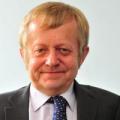
ENGINEERS and IT experts from BAE Systems Lancashire military aircraft division have started in factory simulations of flying the RAF's futuristic new supersonic stealth fighter plane.
The Tempest will use the latest digital technologies and is expected to fly within the next four years and enter service in 2035.
Its eventual production will protect hundreds of jobs at BAE Systems Lancashire factories at Samlesbury and Warton in the long term.
The firm was given a £656million contract to continue developing the revolutionary warplane in April.
Experts from BAE Systems, Rolls-Royce, Leonardo UK, MBDA and the Ministry of Defence are collaborating with a range of British small and medium sized enterprises to develop the technologies needed to deliver Tempest.
Its Flying Technology Demonstrator, first announced by the UK Government in July 2022, is set to fly within the next four years and is being designed using a range of innovative digital techniques.
At a brand new facility, at BAE Systems factory in Warton, test pilots from BAE Systems, Rolls-Royce and the Royal Air Force (RAF) have already flown more than 150 hours of the demonstrator aircraft in a new bespoke simulator, providing crucial evidence to support flight trials.
In a first for military aircraft design, BAE Systems’ engineers have used auto coding to create safety-critical systems software in a matter of days rather than weeks.
This enables rapid assessment of the flight control systems during more complex flight manoeuvres with the simulator capturing crucial data about how the jet will handle and perform years before its first flight.
Engineers have also been carrying out aerodynamic engine testing, harnessing new processes to produce an engine duct uniquely shaped to slow the air from supersonic to sub-sonic speeds at the engine face.
The intake has fewer moving parts than a traditional fighter jet design, enhancing the aircraft's stealthy design.
The test was conducted at Rolls-Royce’s site in Filton, Bristol, where the Concorde Olympus engine was tested in the 1960s.
A team of BAE Systems engineers has led ejection seat trials, using a rocket-propelled sled travelling at speeds of more than 500mph.
This range of novel technologies will demonstrate and test key elements of the next generation combat air design as well as skills, tools, processes and techniques needed to develop Tempest which will be delivered through the Global Combat Air Programme with the UK, Italy and Japan.
Neil Strang, Tempest programme director at BAE Systems, said: "It’s now 40 years since our people led the demonstrator aircraft programme which gave birth to Typhoon and the work we’re doing today is another once-in-a-generation opportunity to write the next chapter in aviation history.
"Right across the Tempest programme we’re using digital techniques and innovative design and engineering methods, to ensure we can deliver Tempest in service by 2035."



Comments: Our rules
We want our comments to be a lively and valuable part of our community - a place where readers can debate and engage with the most important local issues. The ability to comment on our stories is a privilege, not a right, however, and that privilege may be withdrawn if it is abused or misused.
Please report any comments that break our rules.
Read the rules here